Mental condition develop behavior,
including criminal behavior
– a retrospect of two generations of welfare, part 1
‘The temporal apostles of the repressive tolerance’, taught by the totalitarians of temper in Germany, France and USA, made their entry in the early 1960s.
When we looked 30 years back from 1991 – to the time before the welfare system was introduced the same temporal apostles of the repressive tolerance first aimed for Marxism later on for Internationalism that is the same. The difference is that they got the liberal and conservative voters to adopt a least the decisive temper too. Their leaders joined already in 1968
The criminality and police resources in Denmark with 5.2 mill. inhabitants in 1991 (4.6 mill in 1960), of which 1/3 lived in towns with more than 10,000 inhabitants.
The official accounts cannot be meaningfully continued (after 1991), because trustworthy descriptions of the criminality divided between nationalities have been lost in Denmark.
The number of notified violations of criminal law has more than doubled from 1960 to 1990, and in the period 1980-1990 they increased by 35 p.c. to 550,000 notified violations in average a year.
Earlier about 30 p.c. of such violations were solved, in 1991 about one out of five (20 p.c.) ended up with a solution. In 1960 the Police and Prosecution had 7,375 employees, in 1991 the number was 14,500, including 10,200 policemen. It is extremely inefficient if resources do not lack.
The long arm of the law :
In 1962 they had a policeman on the Police Station in Svendborg on Fuen. The youngsters called him ‘Lemmy’ – a figure from an English very popular detective film. They connected that policeofficer a little with figure from the film.
There was some points of resemblance. Eric could confirm that, when he had to admit that he has smashed some windows in the Railway Station of Svendborg in order to make an impression on some young girls.
Today they flee from their country, nearly as fast as the immigration from Islamic countries to new Danish citizenships.
‘Lemmy’ did not let the young first-time-violators run. He caught them, and took them to a not very nice night in the detention. The only thing the youngster did not like by ‘Lemmy’ was that he always was present, when wrong things happened. Otherwise they liked him. Eric found out that it did paid off to make troubles, and he should not go farther on the road of the offences and the criminal actions.
The development in the more dangerous criminality:
Intentional violence and bodily harm occurred in number of a few hundreds in 1960, from 1991 6,400 a year were suspected. About every half year the number of such cases increases with 50 p.c. Cases of narcotics were all most unknown in 1960, in 1991 more than 1,700 cases were tried by police of criminality and by the Prosecution in one year.
The most cases of crimes are about larceny, larceny for the purpose of limited use and housebreaking (totally 430,000). The number of larcenies and house-breakings have increased all most five times in the period 1960-1990.
The number of robberies increased in the period from about 300 a year to nearly 10 times 300. Just in the 1980s the number of robberies more than doubled.
Cases about fortune, money including taxes blocks for cases about assaults, narcotics, bodily harm, larceny and housebreaking. 112,000 cases of violation of the criminal law in 1989, there were 538,300 notified violations, 1,918 prosecution withdraws and 21,659 cases where prosecution was left undone.
The official explanation to criminality:
About the reasons for and the effects of the way things have been developing as described here, the elite of power, criminologists, pedagogues, journalists, sociologists, psychologists, evaluators and other can tell a great deal, and they have the possibility to do so, whenever they want to.
It is always something ‘about an investigation that shows…’, the one more defected or unscientific and poor design than the other
In the Danish newspaper Politiken 23rd July 1989 you could read a reporting from Institute of Criminology. Interior migration from rural to urban districts, differences in the economies of people, and an asserted increased willingness to report criminal acts are stated as reasons to the explosive development in the accounted criminality. In the beginning of the 1980s it was the unemployment that should be guilty, in 1989 the unemployment effects in contrary is so disciplining on so many young people that they instead are concentrating themselves to live healthy and rationally, you could read in the same feature article in Politiken. In 1990 you begin to read in the newspapers, and see on TV that large proportions of the violations of the criminal law are not reported caused by reprisals from the criminals, who all most every time is led free after ended examination.
Yes, you have to hear and see a lot before you loose your senses, especially your sense of humour.
In 1960 people talked to each other in the buses, and carrier cyclists whistled the tune of the day, when they hurried through Copenhagen. From 1975 it was the practice in school-classes that the children shouted and screamed, while the teacher tried to find something they felt like listen to. From 1980 kindergartens rushed up into the buses, and overturned old people. In 1988 less than 200 street-mischief makers could terrorize whole quarters of Copenhagen, while a frightened crowd of policemen just looked at what was happening, afraid of being the persecuted in the media that represents Upper-Denmark least by good most by evil.
In 1991 the forces of ‘the Possesseds’ and of 600 vicars were united to neglect the law and the rights in Denmark. A church occupation in Copenhagen. From that church they made via the media a new Special-Law for some of their friends from the Middle East. Our parliament had to accept, perhaps because they were/are servants, not real rulers.
Who have the real power? The Government or International Red Cross. Or perhaps we have to go higher.
Many despaired individuals asked like this, when I traveled around and told facts in the period 1990-1992.
In 1996 350,000-500,000 immigrants (7-10 p.c.) had settled in Denmark. They are called refugees, even though they have paid 3 year’s wage to come here on false papers and UNCHR maintain that 19 of 20 did fled from war or persecution. They occupied 30 p.c. of the worst cells in the prisons, and they are prosecuted 3-5 times as often than the Danes compare with percentage, when you look at the gross and most infamous criminal acts following the official Danish statistics.
In the description of the criminality it is important to give the possibility of comparison in relation to the foundation of the population, and to their charges for each head category of criminal acts divided between Danish and foreigners.
Without such possibilities (from 1992) the accounts have no meaning anymore.
An example of the consequences of the false arrangement:
With the official foundation of population the analysis of the Commissioner of Police in the years 1993 and 1994 implied among many other things the following conclusion:
4.5 p.c. of shop-larcenies in Denmark were done by Danish citizens. 11.4 p.c. were done by foreign citizens, 84.1 p.c. of the larcenies were done by asylum-applicants. Notice that last percent. Notice that it is 84.1 p.c. of all shop- larcenies in the country, if the charges have been made. Here I trust the Commissioner of the police. This criminality is the consequence of the official information, and this criminality have be made by 10.3 p.c. of all the asylum- applicants, as they are called in the analysis. An in addition the 84.1 p.c. of all shop-larce- nies were only 65.2 p.c. of all the violations of these asylum-applicants.
This was simply false. It was a wild exaggeration to maintain that asylum-applicants were 18-19 times more criminal than the Danish citizens by this criminal act. But this is the consequence of the official information.
General it is difficult with lies. If there officially should be very few asylum-applicants in the country, and charges have been made against some of them, then they have to be very criminal. If there on the other hand are more asylum-applicants, then the registered criminality are divided between this larger number, and then they are not so criminal.
[As a racist you would not have focused on those aspects, I guess. The state did not.]
This critical analysis, of which a single element was brought to light here, was mailed to the Folketinget (the Danish parliament). There were no useful reactions.
Now the reader perhaps understand, why the accounts of the criminality were not published for three years until 1993.
In the beginning of my investigation including I asked the authorities some questions. These questions are listed in the following. The answers I received were not useful, not as information but they were very fine documentation. Bureaucratic flight from the responsibility. I told the public this, and I tell it here too. The reply from the authorities have not been translated to English. The original answer in Danish has just been copied according to its worth
Questions to the responsible authorities about the results of the present reading: [the investigation of criminality 1993 and 1994 made by the Commissioner of Police]
1. In the period 1980-1994 58,048 have received the Danish citizenship by naturalizations. 72 p.c. or 41,783 concern immigrants from outside Western Europe and North America.
Will the account of criminality on this foundation be arranged in such a way that it can be seen, if the charges concern naturalized?
2. Question 1 actualizes even more of the fact that young women which are children of natura- lized, in these years begin to bear children which in spite of their language, culture, and of the father officially can be indicated officially as Danish.
3. The number of ‘asylum-seekers’ is included in the investigation of the Commissioner of Police for the years 1993 and 1994. The number in this category is indicated for the two years to respectively about 21,000 and 20,442.
It has been shown in this analysis that these figures cannot include all refugees including those in integration programs in 1993 and 1994.
When there do not exist official accounts of refugees referring to fixed dates of the year, I want to be informed a little more precisely on which basis the number of refugees as a part of the population in the statistic analysis has been selected? When the accounts of the number in the analysis automatically lead to an systematic overestimated criminality of the refugees, do the authorities then plan to correct the accounting-fault so that the account of the population of Denmark will be in good order hence-forward?
4. Will an initiative be taken to make one description for each category or head-category of criminal acts – and not for a total number of different actions for a part of the population?
5. When the official period ‘News from Criminal Care’ in the numbers 5,6 and 7 1994 informed that the proportion of the imprisoned foreigners in Danish prisons in these years was 10-12 p.c., and interior sources in the prison administration informed that the proportion in those of the prisons where the strongest punished are imprisoned, was 28-32 p.c., does this large divergence attribute to a large deviation in the proportions in the single institutions? Or must this divergence also be seen as a fault in accounting. The 28-32 p.c. matches precisely our estimated frequencies in the more strong criminality among foreigners?
6. If the investigation of the criminality caused by faults in population-basis and/or in the individual choice of category does not fulfill the scientific claims about adequance and unequivocability, will it be corrected then so that it shows a correct picture of the criminality in Denmark including the proportions of foreigners and of Danes in their country?
The Minister of Justice, The Minister of Interior Affairs, their predecessors, and some of their civil servants in the Directory of Foreigners and the Department of Interior Affairs incur a serious responsibility for their misinformation by distorted descriptions of the criminality in Denmark for example in the years 1993 and 1994.
In 1991 new kinds of categories were introduced to be use to count the foreigners in Denmark. We protested at once because the new concepts were neither in order according the scientific claims on adequance, unequivocability nor functionality.
Did we get any results in a period of the latest 15 year? Or what did consequences of the public mistakes look like 15 years later. In August 2005 the Ministry of Justice published an investigation on crimes distributed betweens immigrants, descendants and Danish.
To be continued in part 2 – the new system of counting
Sonia














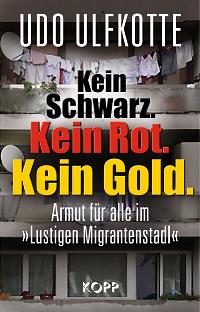
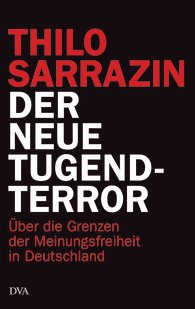

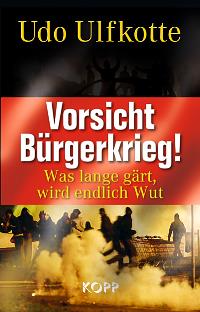


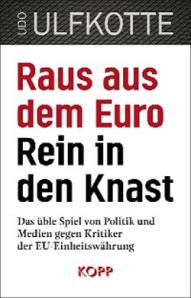



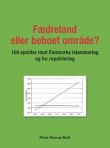

 Indvandrings-
hastigheden voksede
endnu mere i 2013
Indvandrings-
hastigheden voksede
endnu mere i 2013



[…] Go to history behind in part 1 […]
Pingback af We are Being Deceived with Distribution of Criminal Acts - part 2 « Danmark — 15. november 2006 @ 18:24
[…] Go to history behind in part 1 […]
Pingback af 2006 November 15 « Danmark — 15. november 2006 @ 18:34
[…] Two Generations of Welfare in Denmark with Respect to Crimes – part 1 […]
Pingback af 2006 November 16 « Danmark — 16. november 2006 @ 16:04
[…] View […]
Pingback af All Posts on http://Danmark.Wordpress.com « Danmark — 17. marts 2009 @ 23:46